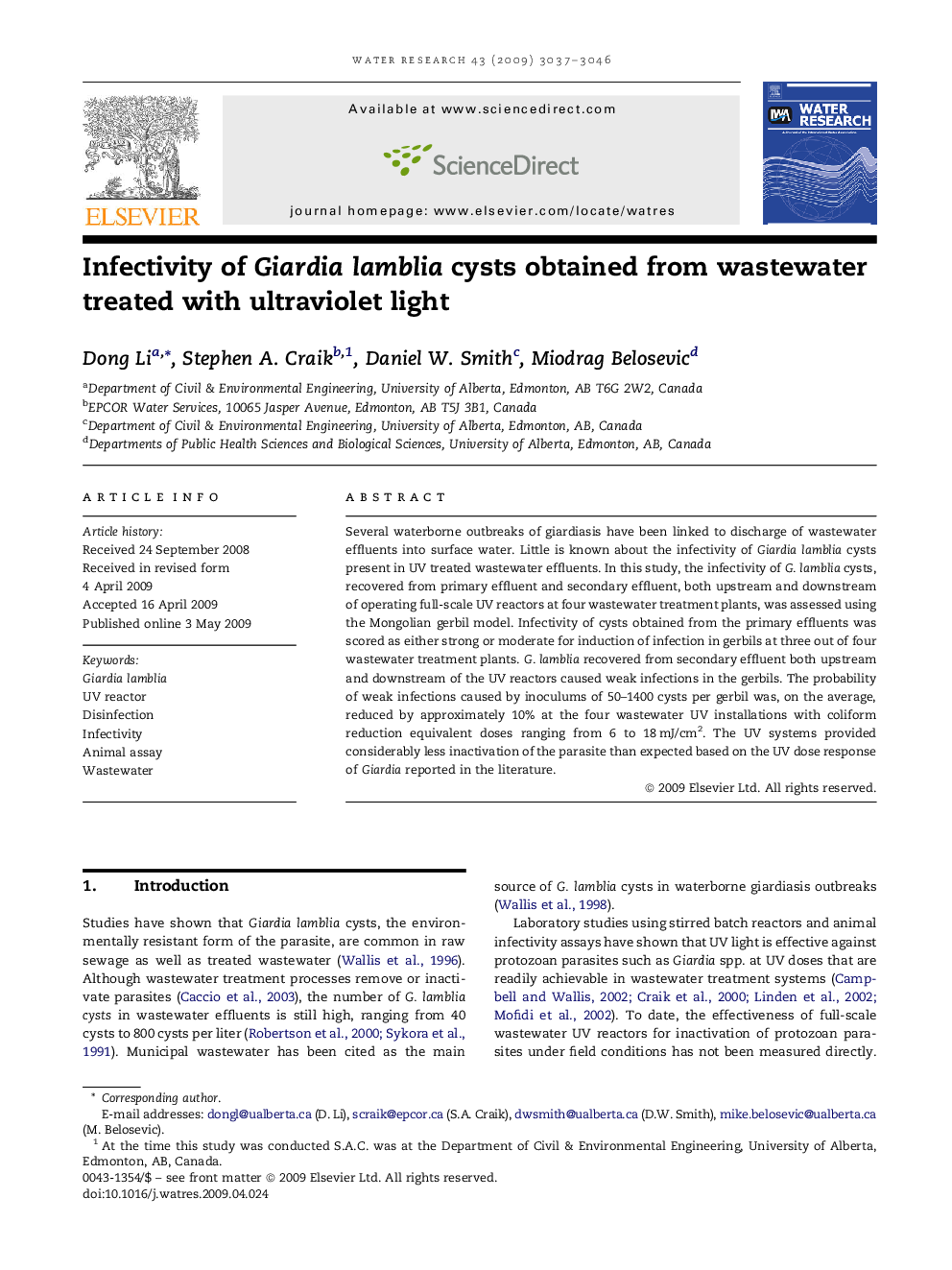| Article ID | Journal | Published Year | Pages | File Type |
|---|---|---|---|---|
| 4482964 | Water Research | 2009 | 10 Pages |
Several waterborne outbreaks of giardiasis have been linked to discharge of wastewater effluents into surface water. Little is known about the infectivity of Giardia lamblia cysts present in UV treated wastewater effluents. In this study, the infectivity of G. lamblia cysts, recovered from primary effluent and secondary effluent, both upstream and downstream of operating full-scale UV reactors at four wastewater treatment plants, was assessed using the Mongolian gerbil model. Infectivity of cysts obtained from the primary effluents was scored as either strong or moderate for induction of infection in gerbils at three out of four wastewater treatment plants. G. lamblia recovered from secondary effluent both upstream and downstream of the UV reactors caused weak infections in the gerbils. The probability of weak infections caused by inoculums of 50–1400 cysts per gerbil was, on the average, reduced by approximately 10% at the four wastewater UV installations with coliform reduction equivalent doses ranging from 6 to 18 mJ/cm2. The UV systems provided considerably less inactivation of the parasite than expected based on the UV dose response of Giardia reported in the literature.
